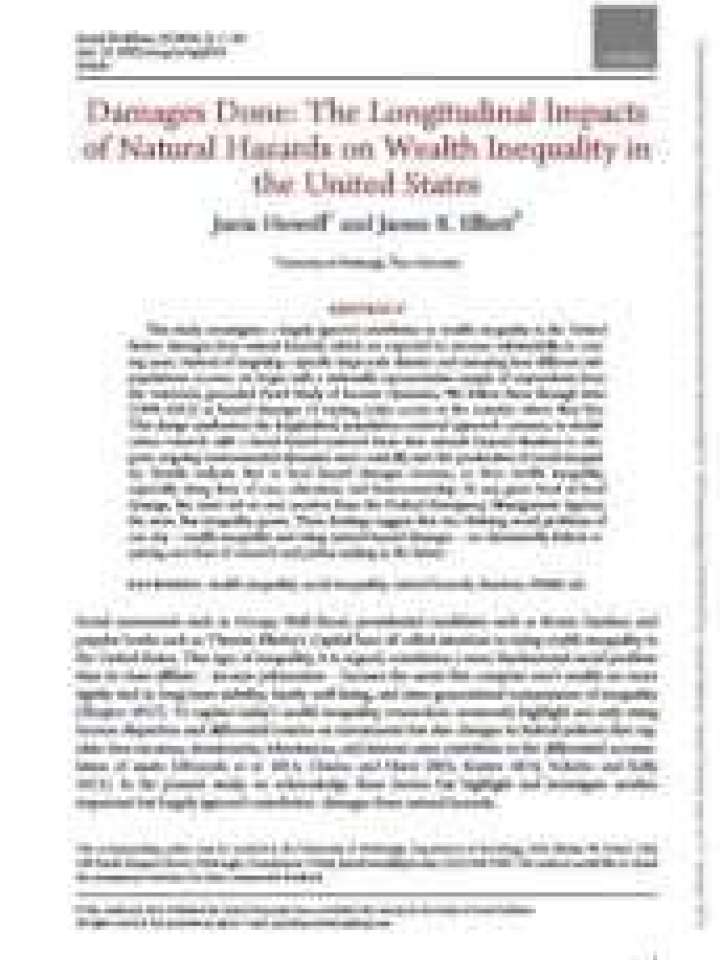Damages done: the longitudinal impacts of natural hazards on wealth inequality in the United States
This study investigates a largely ignored contributor to wealth inequality in the United States: damages from natural hazards, which are expected to increase substantially in coming years.
Instead of targeting a specific large-scale disaster and assessing how different subpopulations recover, it begins with a nationally representative sample of respondents from the restricted, geocoded Panel Study of Income Dynamics. It follows them through time (1999–2013) as hazard damages of varying scales accrue in the counties where they live. This design synthesizes the longitudinal, population-centered approach common in stratification research with a broad hazard-centered focus that extends beyond disasters to integrate ongoing environmental dynamics more centrally into the production of social inequality.
Results indicate that as local hazard damages increase, so does wealth inequality, especially along lines of race, education, and homeownership. At any given level of local damage, the more aid an area receives from the Federal Emergency Management Agency, the more this inequality grows. These findings suggest that two defining social problems of our day – wealth inequality and rising natural hazard damages – are dynamically linked, requiring new lines of research and policy making in the future.
Explore further
